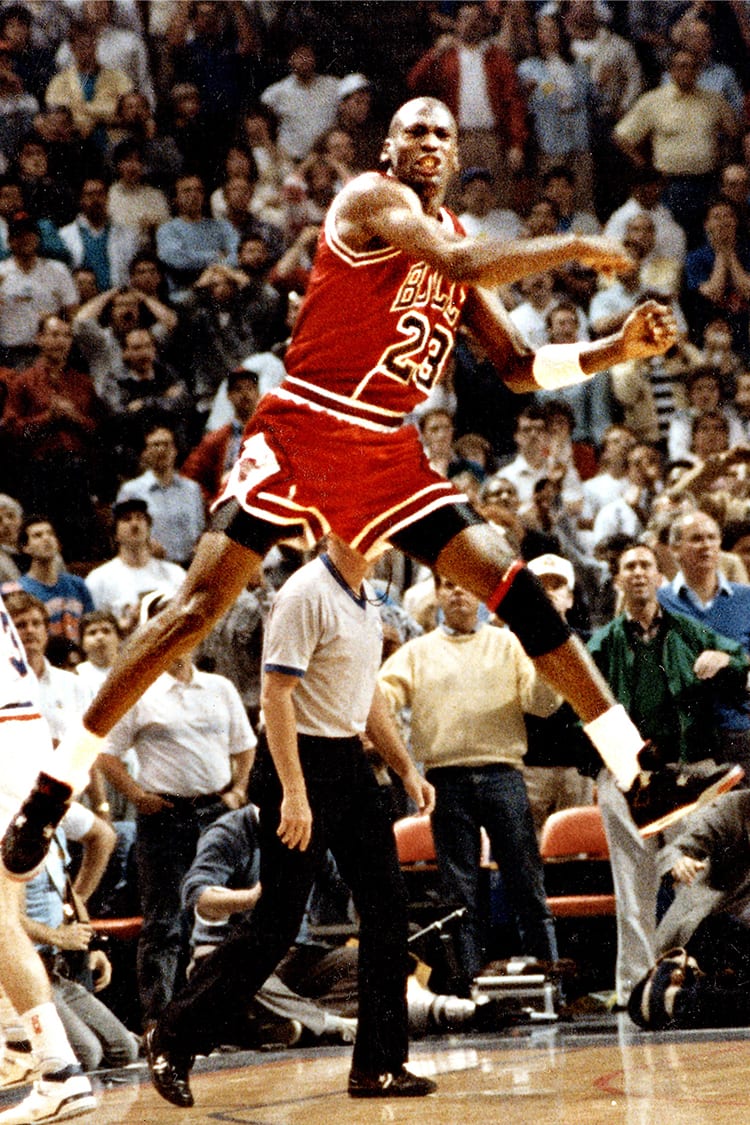
Words: Drew Hammell
May 7, 1989.
Three seconds.
For just three seconds, all Cleveland had to do was lock down Michael Jordan. They believed they had the players to do it, too.
Up 100-99 with three seconds left, Cleveland should have taken down Chicago in Round 1 of the 1989 Playoffs. In fact, they beat Chicago all six times during the regular season. Yet Cleveland’s dominance began to crumble, as the two, chippy Eastern Conference rivals battled back and forth in the first round. It all came down to a fifth, deciding game to determine who would move on.
At home on May 7 for Game 5, in front of a raucous crowd, they enforced their will on Chicago. Of course, MJ’s teammates did not back down. In the final three minutes, the lead changed six times. With Cleveland down 99-98, an acrobatic layup gave them back the lead. It looked like Cleveland had won it, and that the game had its hero.
Except there were still three seconds left.

During the timeout, a play was drawn up for the Chicago center to take the last shot, thinking that the defense wouldn’t expect it. MJ, of course, was furious. He slapped the clipboard and insisted the ball come to him. A new play was drawn up for MJ to get the inbound pass. As they walked onto the floor, MJ told a teammate that he was making that shot.
No matter the outcome, he’d be wearing a black and red sneaker called the Air Jordan IV, which had been elevating his game for half of the ‘88-’89 season. He’d first laced up the new model for the NBA All-Star Game on February 12, 1989 in Houston, Texas, and it was also the first global release for an Air Jordan model.
Through three defenders, the in-bounder made a perfect pass to MJ. He caught the ball, dribbled twice towards the foul line and leapt into the air. He floated just long enough to prevent the defender from blocking his shot, pumping in the air and letting the ball fly just as the buzzer sounded.
You know the rest: The Shot. Ballgame. Fist pumps.
To this day, many wonder how MJ fit all of that into three seconds. It was a truly remarkable shot, and he was ecstatic. MJ credited his focus with a pregame locker room ritual — listening to a song with his teammates about having nothing to lose. “We’re going to New York, baby,” 26-year-old MJ proclaimed confidently after the victory.
After striving for elegance and sophistication with the Air Jordan III, designer Tinker Hatfield opted for a more utilitarian approach with the IV. Though the Air Jordan III and IV have some similarities, they are also different in several key ways. For example, to enhance performance, Hatfield added “over-molded” mesh paneling for breathability. This new technology allowed the foot to breathe more compared to sneakers with leather panels.

The Air Jordan IV also featured multiport lace locks and wings, which had extra holes on each side of the shoe for a more tailored fit. The sneaker could be laced in different patterns for a more customized look. Additionally, the words “Air Jordan” were stitched inside the tongue upside-down. Wearers could flip the tongue down so that “Air Jordan” could be read right-side up.
Over the last 30 years, the Air Jordan IV has become one of the most beloved silhouettes of all time. Dressed in the original black, cement grey and fire red colorway, the IV features a remastered black upper, cement grey detailing, red accents and the original “Nike Air” branding on the heel. While MJ’s debut of the AJIV “Bred” was memorable, hitting “The Shot” against Cleveland helped make the shoe iconic.